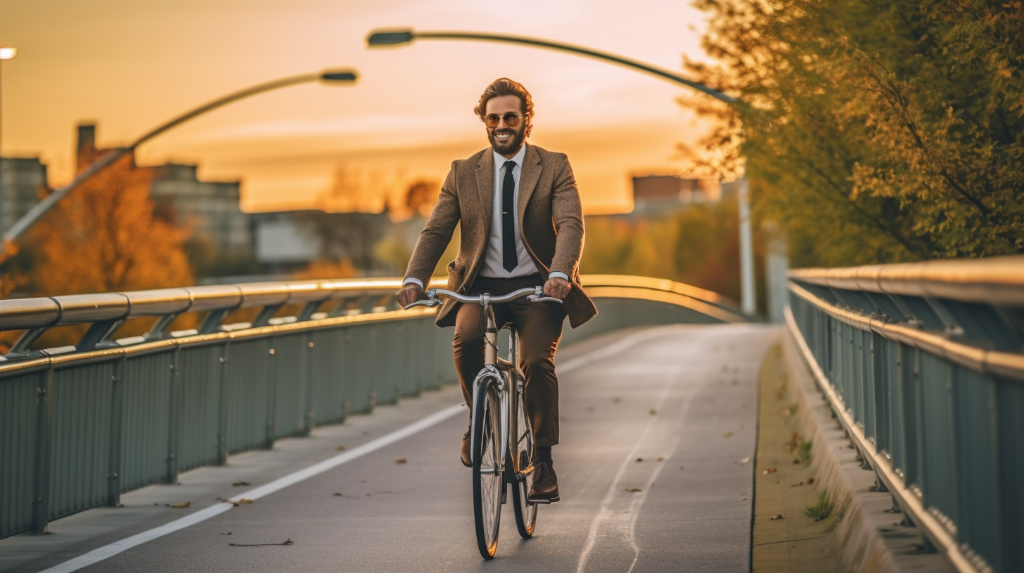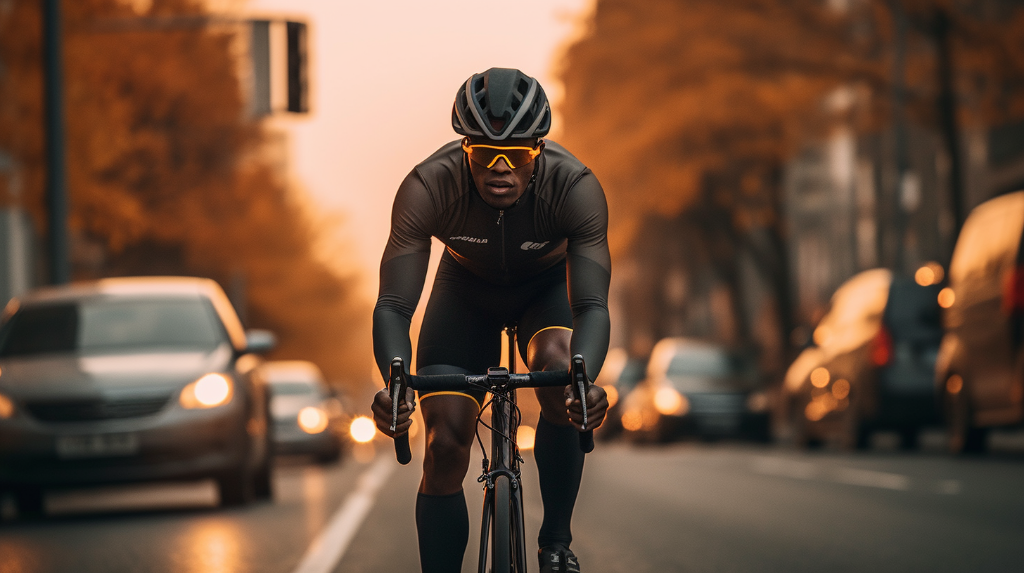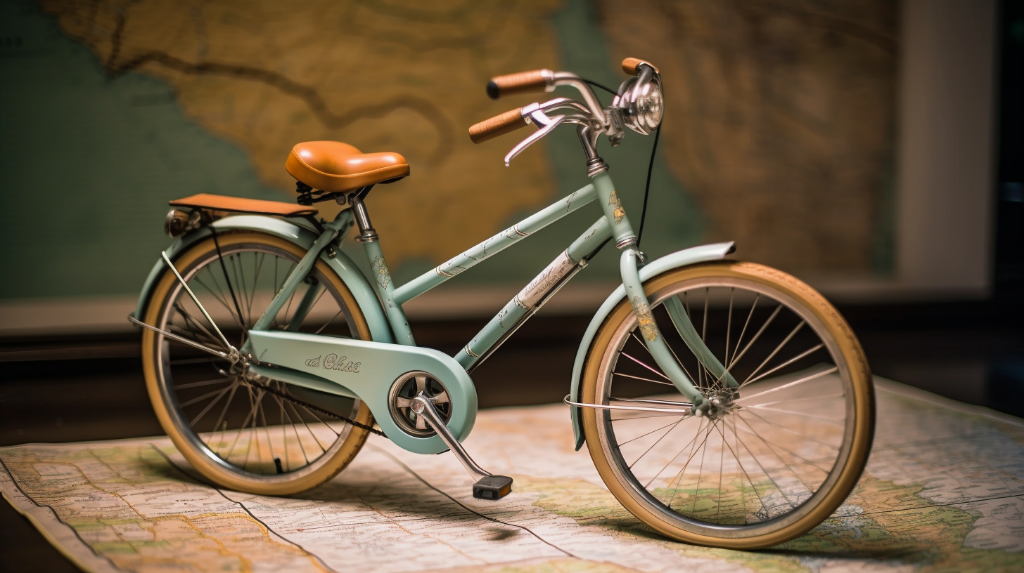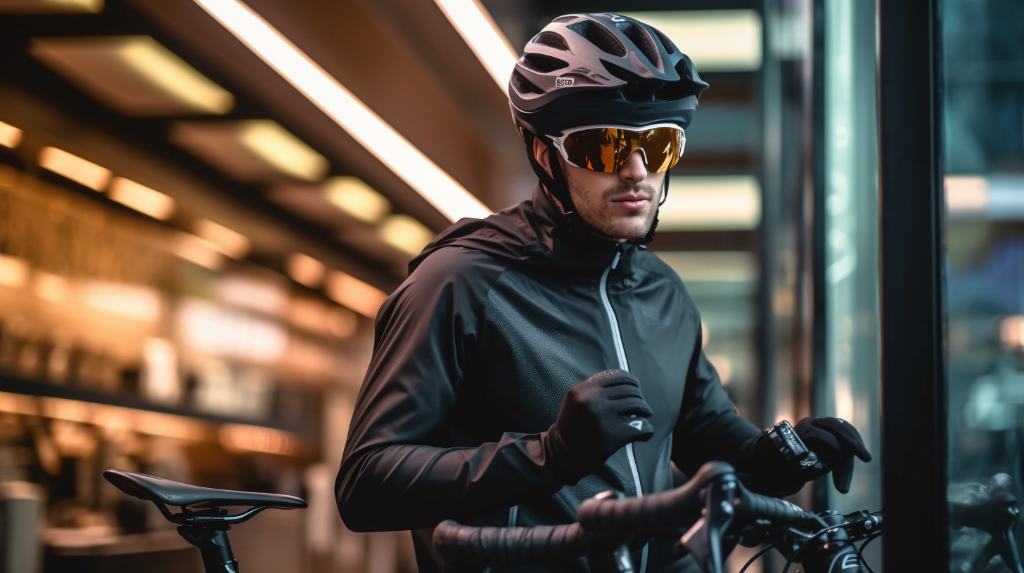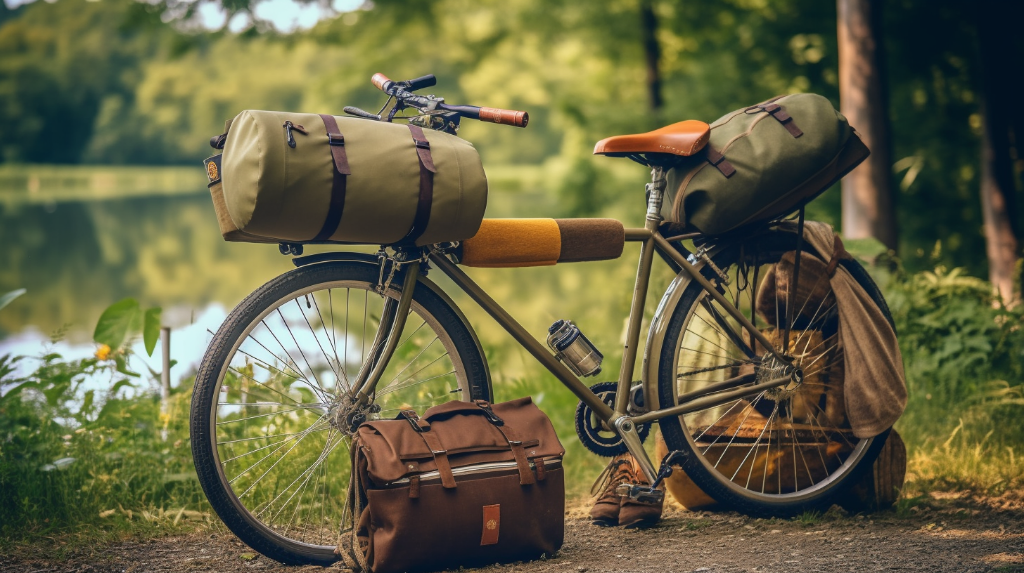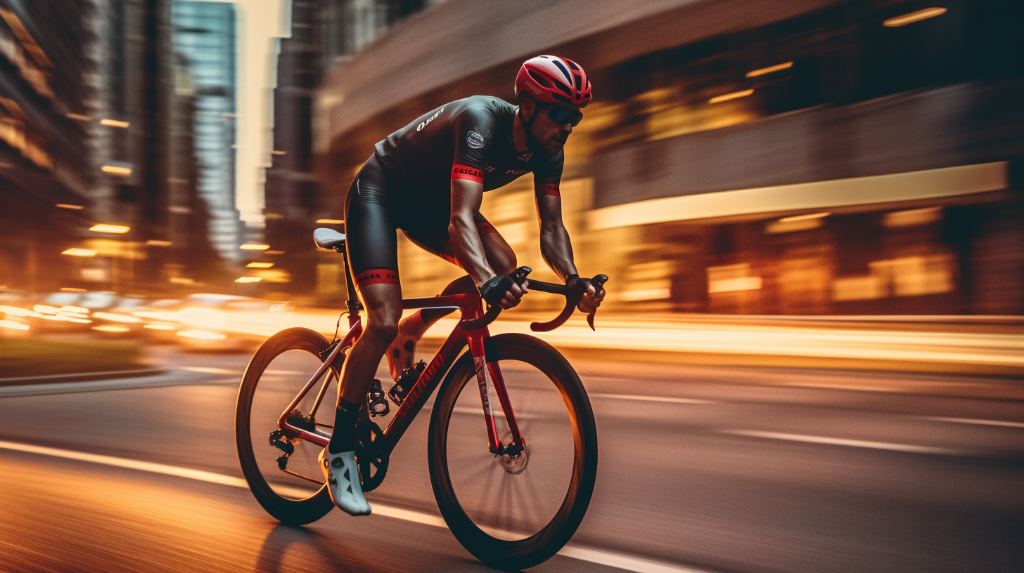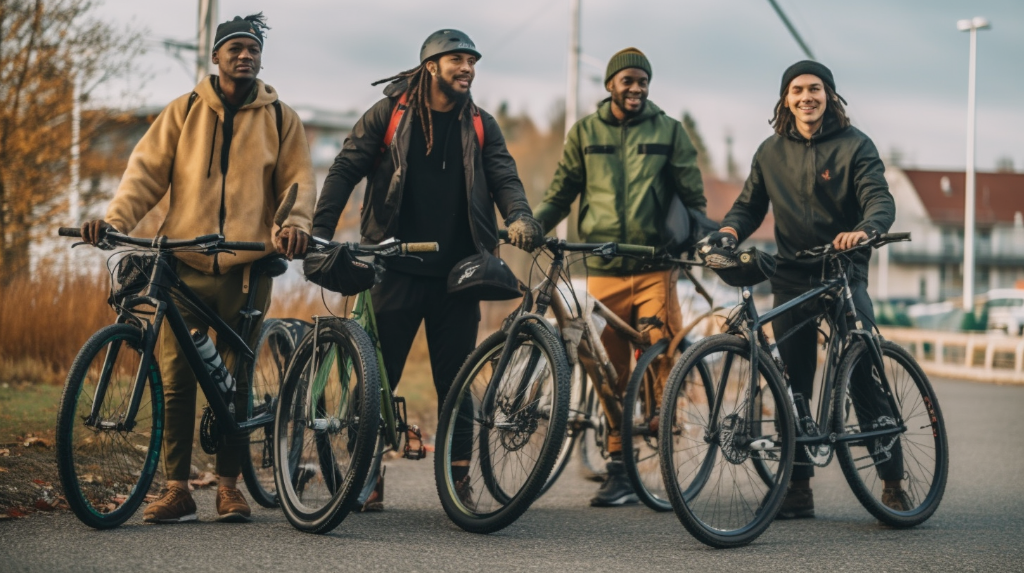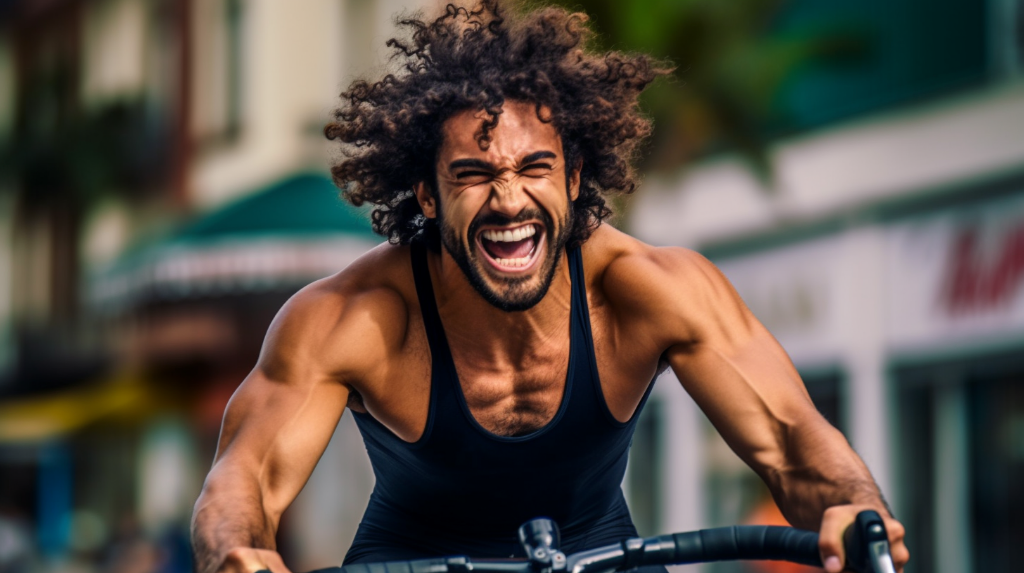Balancing Cycling with Work and Life
Imagine this: It’s a beautiful morning, the sun is shining, you’re on your bike, and the wind is gently brushing past your face. Sounds like a dream, right? But then reality hits, and you remember that you have a full day of work ahead, and a pile of personal commitments to attend to. But what if we told you that it’s possible to find a balance between your love for cycling, your work, and your personal life? Yes, it’s a challenge, but it’s definitely not impossible. Cycling is not just a means of transport or a pastime activity, it’s a way of life with numerous physical and mental benefits. This is why, despite having a busy schedule, it’s crucial to incorporate cycling into your daily routine.
Why Is Balancing Cycling with Work and Life Essential?
Firstly, let’s address the elephant in the room: why is it so important to balance cycling with work and life? Well, cycling is an excellent form of exercise that keeps us physically fit and mentally agile. It aids in stress relief and has been shown to increase productivity at work. Plus, the sense of freedom and satisfaction that comes from cycling can significantly enhance our overall life satisfaction. So, isn’t it worth making cycling a priority?
Challenges in Balancing Cycling with Work and Life
While the benefits of cycling are clear, incorporating it into a busy schedule is easier said than done. We often struggle with managing our time effectively, battling fatigue after a long day of work, maintaining motivation, and committing to regular cycling. These are common obstacles that many of us face. But guess what? Every problem has a solution, and we’re here to help you find yours!
Strategies for Balancing Cycling with Work Commitments
Ever thought about how you can make cycling a part of your regular work routine? It’s not as hard as it may seem. With a little planning and time management, you can easily incorporate cycling into your work commitments. And the best part? You’ll not only be doing something great for your health, but you’ll also be adding some fun to your daily grind.
Let’s look at a couple of strategies to help you get started.
Incorporating Cycling into Your Daily Commute
One of the easiest ways to balance cycling with work is to use your bike for your daily commute. Not only does it save on fuel costs and reduce your carbon footprint, but it also gives you a chance to squeeze in a workout without taking extra time out of your day.
Start by planning a safe and convenient route. Make sure to consider factors like traffic, road conditions, and lighting. Remember, safety first! Also, it’s important to prepare for different weather conditions. A light rain jacket and a pair of gloves can make a world of difference on a chilly, wet morning. And don’t forget regular bike maintenance. A well-oiled machine will ensure a smooth and efficient ride.
Using Breaks for Short Cycling Sessions
Another great strategy is to make the most of your breaks at work. Instead of spending your lunch break at your desk, why not take a quick ride? It’s a great way to clear your mind and recharge for the afternoon ahead. Plus, it’s a fantastic opportunity to explore your local surroundings and enjoy a bit of fresh air.
If your office has shower facilities, you could even consider a more intense cycling session. That way, you can return to work feeling refreshed and energized.
Making the Most of Your Cycling Time
When you’re pressed for time, it’s all about making the most of every minute. So how can you maximize the benefits of cycling, even within a limited timeframe?
Start by setting specific goals for each ride. This could be improving your speed, increasing your distance, or even just enjoying the ride. By having a clear objective, you’ll be more motivated and get more out of each session.
Varying your workout intensity is another great way to get the most out of your cycling time. Instead of just cruising at a steady pace, try incorporating some high-intensity intervals. They’re a great way to improve your fitness and burn more calories in less time.
And remember, it’s not always about the quantity of time spent cycling, but the quality. Focus on making each ride count, whether it’s a quick 15-minute sprint or a leisurely hour-long ride. Cycling should be enjoyable, so make sure you’re having fun while you’re at it!
How to Balance Cycling with your Personal Life
So, you love cycling but also have personal responsibilities and relationships that need attention? Don’t fret! It’s all about finding that sweet spot of balance. The importance of setting boundaries cannot be overemphasized. It’s crucial to respect your personal time and make sure that your cycling activities don’t intrude on it. Just like your work, allocate specific hours for cycling and stick to them.
One effective strategy is scheduling your cycling sessions. This way, you can work around your personal commitments and ensure that nothing is left on the backburner. It also helps in avoiding last-minute scrambles or clashes between your cycling and personal schedules. But remember, flexibility is key. Life can be unpredictable, and it’s okay to adjust your schedule when necessary.
And here’s a fun idea: Why not involve your family or friends in your cycling activities? Not only will it make your sessions more enjoyable, but it will also allow you to spend quality time with your loved ones. Think about it, isn’t it a win-win?
Activities with Family and Friends that Involve Cycling
- Family bike rides: Plan routes that are suitable for all ages and fitness levels.
- Cycling picnics: Pack a picnic basket, choose a scenic spot, and cycle your way there.
- Bike races: Organize friendly competitions and races with your friends.
- Bike maintenance sessions: Turn bike care and maintenance into a group activity.
- Join a cycling club: Be part of a community that shares your passion.
Staying Motivated and Committed to Cycling
Let’s face it, life can get busy, and sometimes, motivation can falter. But don’t let that stop you from doing what you love! It’s important to set achievable goals. Whether it’s cycling a certain distance, losing weight, or simply getting fitter, having a goal gives you a reason to keep going.
Tracking your progress is another great motivation booster. Seeing how far you’ve come can be a real pick-me-up on those days when you just don’t feel like getting on the bike.
Ever thought about joining a cycling group? It’s an excellent way to meet like-minded individuals who can help keep your enthusiasm high. Plus, it’s a lot more fun to cycle in a group than alone. And who knows, you might even make some lifelong friends!
Lastly, keep things interesting. Mix up your routes, try different types of cycling, or even combine your cycling with other forms of exercise. Remember, variety is the spice of life!
Effects of Cycling on Work Productivity and Personal Life Satisfaction
Ever wondered how regular physical activities like cycling could boost your work productivity? Well, it’s no secret that physical fitness plays a crucial role in our work efficiency. Cycling, being an excellent form of exercise, can significantly improve your physical health, which in turn, enhances your work productivity.
First and foremost, regular cycling can increase your stamina and energy levels. You know the feeling when you’re so drained after work that you can’t even think straight? With regular cycling, you can say goodbye to those days. Additionally, cycling is great for your mental clarity. It can help clear your mind, improve your focus, and reduce stress levels. Imagine starting your workday feeling energized and focused. Sounds great, right?
Now, let’s talk about personal life satisfaction. Cycling, like any other hobby, can offer a sense of achievement and happiness. It’s that feeling of joy when you reach the top of a hill or when you beat your personal best. Plus, it’s a great way to explore new places, meet new people, and create memorable experiences. In short, cycling can bring a lot of positivity and satisfaction into your life.
Final Tips and Reminders for Balancing Cycling with Work and Life
By now, you’ve probably gathered a wealth of information on how to balance cycling with your work and personal life. However, let’s wrap it up with some final tips and reminders.
Remember, the key to maintaining a balance is planning and setting realistic goals. Start small and gradually increase your cycling time as you get more comfortable. Also, don’t forget to prioritize your responsibilities. It’s great to be passionate about cycling, but it shouldn’t come at the expense of your work commitments or personal relationships.
Lastly, keep it fun. Cycling should be something you enjoy, not a chore. So, explore new routes, join cycling groups, or involve your family and friends. After all, it’s the journey that matters, not just the destination, right?
| Tips and Strategies | Description |
|---|---|
| Planning and Setting Goals | Plan your cycling schedule and set realistic goals to maintain a balance. |
| Time Management | Manage your time efficiently to fit cycling into your busy schedule. |
| Work Commitments | Don’t let cycling interfere with your work commitments. Prioritize accordingly. |
| Keeping it Fun | Keep your cycling sessions fun and enjoyable to stay motivated. |
| Personal Relationships | Involve family and friends in your cycling activities to strengthen personal relationships. |
